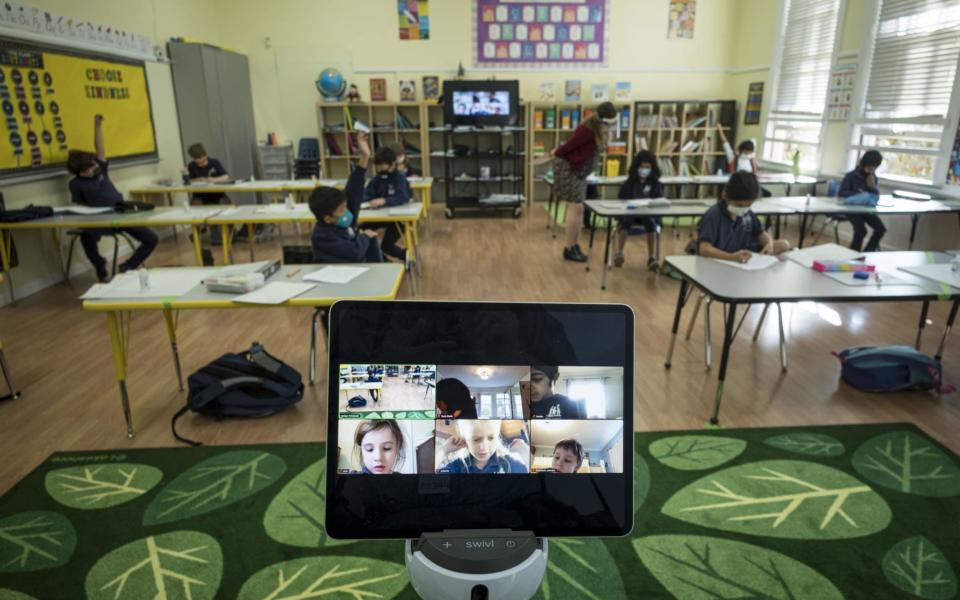Disease experts criticise school for shuffling pupils around every 15 minutes to avoid quarantine

A Montana school district is rotating pupils every 15 minutes in a bid to avoid quarantine requirements, prompting criticism from experts who warn it could lead to more infections than it prevents.
The Billings Public Schools, the largest school district in the state, currently moves its pupils around the classroom four times every hour to reduce the time spent near each other.
Its approach is based on the theory that only students who have been in “close contact”, defined as being within six feet of an infected individual for more than 15 minutes, must isolate themselves.
If the students move before this time limit, then in theory no one will be required to stay at home after a classmate tests positive.
The superintendent of the 16,500-student school district said administrators came up with the plan after looking to ease the heavy burden of contact tracing.
Teachers are encouraged to “disrupt the 15-minute timeline through movement, distancing, and masking,” Greg Upham said in an email.
He said it was not meant to "game the system," but to raise awareness of the 15-minute risk, according to the New York Times.
Yet according to experts this system is flawed.

“The 15-minute time cutoff for 'close contact' is not evidence-based,” said Professor Trish Greenhalgh, Professor of Primary Health Care Services at the University of Oxford.
Although a person’s chances of catching coronavirus are higher the longer they are in contact with a contagious individual, the number of people a person interacts with can also increase the probability of infection, Prof Greenhalgh explained.
“So 'rotating pupils' every 15 minutes could hugely increase all pupils’ chances of being exposed to the SARS-CoV-2, developing Covid-19, and passing the virus on to their extended family,” she said.
“What this rotation policy will do is expose additional children directly to the exhaled breath of an infected child, which carries a high risk of transmission.”
The principal of a school in the district justified the decision in an email to staff, saying that movement would help dissipate airborne droplets of the virus, according to the New York Times.
“The risk of being contaminated is greatly reduced," the email said.
But Professor Jackie Cassell, Deputy Dean of Brighton and Sussex Medical School, disagrees with this conclusion, arguing that movement could cause droplets to spread further.
“By increasing the circulation of children you may increase transmission, for example from droplets containing virus left on the furniture, and contact during movements,” she said.
“The 15 minute cut-off for quarantine is designed to help make sensible decisions about contact tracing in a restaurant, or other situations where people are in close proximity. It’s not a recommendation to move people more.”

